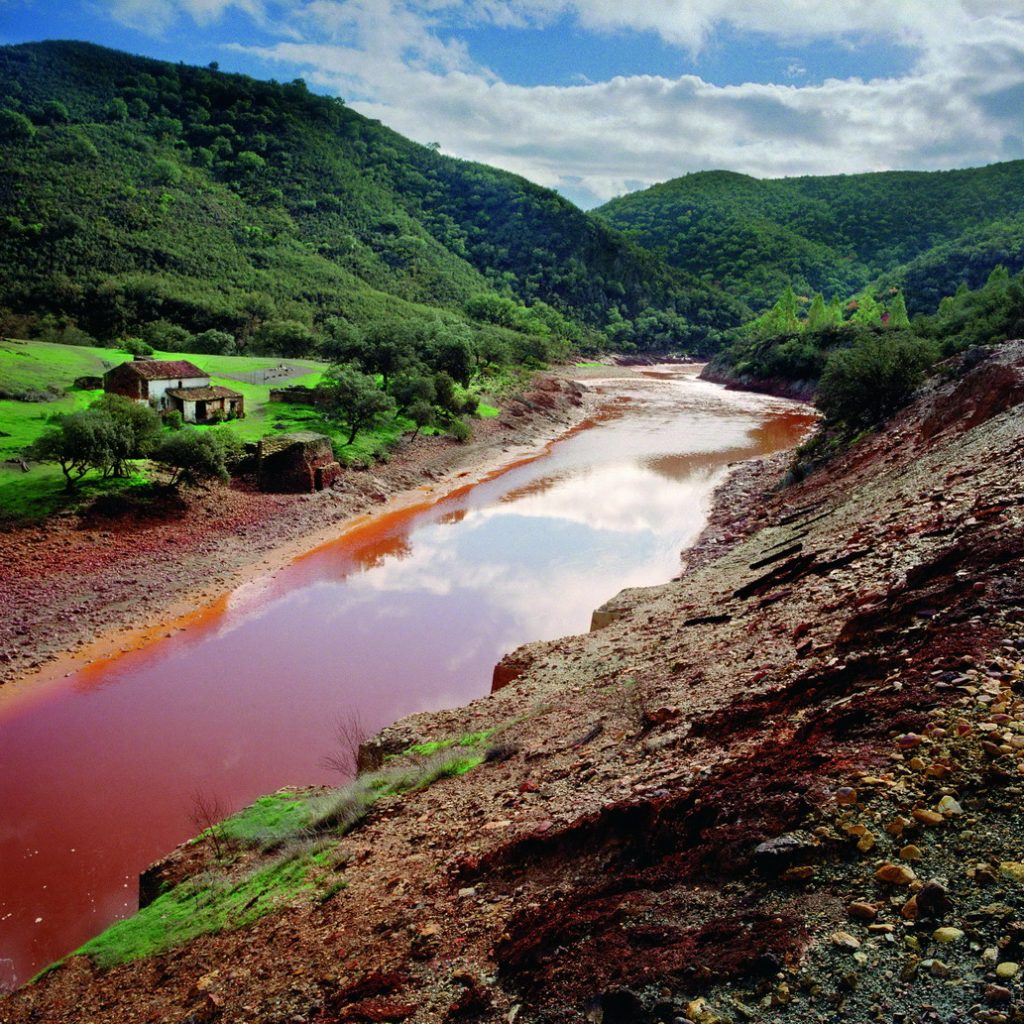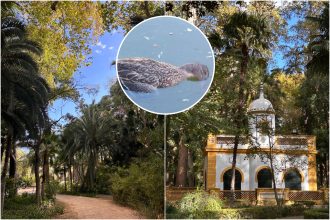Deep in the rugged hills of Huelva, Andalucia, the landscape is unlike anywhere else in Spain.
The water of the Rio Tinto river runs red with iron, while the surrounding earth is scarred by centuries of extraction.
For more than 5,000 years, this has been one of the world’s most remarkable mining regions, exploited by Tartessians, Romans and Moors alike.
But it was the arrival of the British in the 19th century that left perhaps the most surprising legacy, one that went far beyond industry and into daily life, culture, and even the Spanish language.

The British takeover
By the late 1800s, Spain’s state-run mines were struggling with outdated techniques and lack of investment.
In 1873, the Spanish government sold the rights to the Rio Tinto Company Limited (RTC), a British consortium of investors, for what today would be around €90million.
Overnight, the dusty Andalucian mining villages were transformed into a thriving industrial colony.
The RTC introduced modern extraction methods and railways, dramatically increasing production of copper, iron and pyrite.
At its peak, the company employed more than 20,000 workers. But it wasn’t just the economy that changed: a distinctly British way of life was exported into the Andalucian heartland.
A slice of England in Andalucia
The British managers built an enclave for themselves in the Barrio de Reina Victoria (Queen Victoria neighbourhood), in Bella Vista. It is situated in the town of Minas de Riotinto and could have been plucked from the English Midlands.
Red-brick Victorian houses, Anglican churches, manicured gardens, a tennis club, even an English cemetery: all stood in stark contrast to the humble whitewashed homes of the Spanish workers nearby.
One of the oddest imports was football. The British miners formed teams to play among themselves, but soon local Spaniards picked up the game.

In 1889, Recreativo de Huelva was founded here – now recognised as Spain’s oldest football club. Cricket, rugby and tennis were also played in Bella Vista, though only football survived as a lasting passion in Andalucía.
Language and culture
The English presence also seeped into local vocabulary. Words like dril (from ‘drill’), chapapote (from “chapapote tarpaulin”), or pitingo (from “pitting”) entered the miners’ jargon.
Even today, older residents of the area sprinkle their Spanish with anglicised terms passed down through generations.
Socially, the divide was stark. The British managers and engineers lived in relative luxury, while Spanish miners endured harsh conditions and long hours underground.

This tension occasionally boiled over, most infamously in the ‘Year of the Shots’ (1888), when a miners’ protest over toxic fumes from open-air pyrite burning was brutally repressed, leaving dozens dead.
The massacre remains one of the darkest chapters of Spain’s industrial history.
The decline of the empire
The RTC controlled the mines until 1954, when they were sold back to Spanish ownership. By then, global competition and dwindling deposits were making operations less profitable.
Yet the British imprint on the region never faded. Bella Vista still stands today, its Victorian houses preserved as a living museum.
Visitors can also tour the old railway, the mines themselves, and the museum dedicated to the area’s rich history.
Legacy today
For Huelva, the legacy of the British miners is paradoxical. On one hand, they brought industrial progress, modern sports and a dash of Anglo culture.
On the other, they left behind stories of exploitation, environmental damage, and social inequality.
Still, without their presence, Huelva might never have become home to Spain’s first football club and the people of Minas de Riotinto wouldn’t have inherited such a curious blend of Spanish and English heritage.
Read more Andalucia news at the Spanish Eye.








